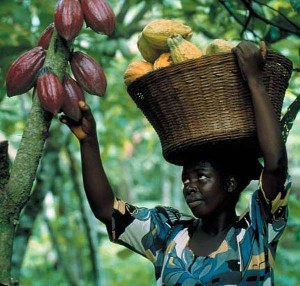Agriculture from across the world!
Small scale farming and plantation scale farming!
Agriculture problems are special to each country!
 A latest issue of The Economist magazine has covered the rice farming countries of Asia. We have also seen some of them, mainly, the Philippines, Cambodia, and Thailand. The other prominent Asian rice economies are Indonesia (where the poverty rate is high, 16% of the 250 m people survive on 1.90 dollar a day. So too in Cambodia to 6% of 15 m people survive at the same level. For these countries, besides Japan and India and even China too rice is the staple crop.
A latest issue of The Economist magazine has covered the rice farming countries of Asia. We have also seen some of them, mainly, the Philippines, Cambodia, and Thailand. The other prominent Asian rice economies are Indonesia (where the poverty rate is high, 16% of the 250 m people survive on 1.90 dollar a day. So too in Cambodia to 6% of 15 m people survive at the same level. For these countries, besides Japan and India and even China too rice is the staple crop.
Now, rice is a very fragile crop, the cultivation costs are high, while the earning potential is limited and the rice trade is constrained by several internal and international trade practices restrict the earning potential. Anyway, the Asian economies thrive on this food crop, other big rice producers and exporters are Myanmar, Thailand, the world’s biggest exporter, though India is now nearing or exceeding Thailand as a top rice exporter. Basmati is India’s unique rice and it earns considerable foreign exchange.
Indian agriculture is big; it is the biggest employment generator, even today. However, the priority of agriculture in the Indian economy is not widely known, let alone widely appreciated.
Farmers in India are a neglected lot. Where the leaders talk of agriculture they do so either in terms of vote bank or in terms of ensuring sufficient food supply through ration shops, some 60,000 of them see to it that subsidised rice is made available.
Otherwise, the politicians know there would be food riots.
So far so much we know of agriculture.
But what we don’t know is that as a society, as a modern society, we don’t have any developed media presence in the agri sector.
There is no widespread coverage of farmers lives, their own vast community strength, their society, familes, rural families at that are covered only as a source of poverty and deprivation.
But do we really care to know the strength of the agri sector either in India or around the world?
We don’t really care to know either. So, for a change let us see what is happening around the world.Now, there is good news that of all the commodities, it is cocoa crop that gives us the raw material the beans to make chocolate, it is reported, that is in great demand across the world. Chocolate consumption is booming and hence that is big investment in the cocoa cultivation sector.
In fact, the prices f cocoa beans had soared by as high as 50% and hence big corporate companies are investing in cocoa cultivation on an industrial scale.
Unite Cacao and KKO are two big names in industrial scale cocoa cultivation, one a Peruvian grower, another in Ivory Coast. Now these are the two African countries where about 3,00 hectares in Ivory Coast is under cultivation. Ivory Coast by the way is the world’s biggest supplier. While the cocoa cultivation has been historically dominated by millions of small farmers, some companies are looking for industrialise cultivation by investments and modern cultivation practices.
Why this big demand?
The rising middle classes in Asia are a big consumer of chocolates, we are told.
This year’s El Nino weather pattern is pushing prices and 50%rise in prices since 2012 has dramatically pushed up prices and demand for higher output, from Ecuador to Indonesia.
Once prices raise dramatically, the corporate investors, cultivators get big ideas and for big investment, this year, of all the commodities, it is cocoa that had set to lead the rest of the agri commodities. United Caco expel 10,000 tonnes, the production shortage is expected to be 150,000 tonnes. Of the 24 raw materials tracked by the analysts it is only cocoa that exceeds all others, in terms of prices and demand! About 40 per cent of the cocoa produced worldwide is lost to pests and diseases.
In Sierra Leone where Agriterra, another big company, had to reconsider its cocoa cultivation as it was hit by 3,200 hectare farm is located, was hit by the outbreak of Ebola. In Peru too United is considering investing in a big way as land, freehold land is available in plenty. Peru is the lowest cost cocoa producer country. Ivory Coast is having a price guarantee system set by the government so that farmers are assured of a minimum price based on forward sales.
It looks India where also cocoa is grown in the Southern states; we are nowhere where we don’t have cocoa cultivation on a plantation scale.
Of course we have tea estates, rubber cultivation on plantation scale. The time has come to see where what we can grow on plantation scale. So that big investments can come into agri sector. May be coffee, tea, beside some other crops that are suited for big investments.
Image Source : http://www.unep.org/dewa/Africa/publications/AEO-1/img2f8.htm